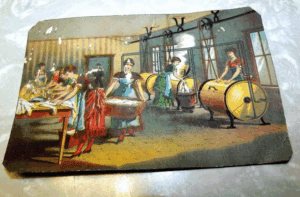By Emily Halstead, K-State Research and Extension news service
MANHATTAN, Kan. – Garden space is prime real estate for many Kansans, so Kansas State University horticulture expert Ward Upham said growing some crops vertically is a way to efficiently use available areas.
Vertical gardening means growing up – or the opposite of the routine horizontal system.
“Growing vertically not only helps conserve space, but can also help prevent disease due to better air movement,” Upham said.
Many gardeners are familiar with growing tomatoes using cages, but other crops can also be trained to grow up a structure.
“Crops that can be grown vertically include pole beans, peas and the vining crops such as cucumbers, melons, squash and gourds,” Upham said.
Upham suggests avoiding growing ‘bush-type’ vining crops vertically as they are bred to produce short vines. “Another thing to keep in mind is that large fruit from vining crops may need to be supported so they don’t damage the vine,” he said.
There are a few options for what can be used as a structure. Bamboo poles are often used to support pole beans, but cattle panels are also an option.
“Two half-panels can be tied together at the top to form a ‘pup tent,’” Upham said. “Crops can then be planted at the base of each panel.”
Transplanting Tomatoes Early
Upham also has recently shared tips for how to get tomato plants to produce earlier in the year.
“Most people who try to get a jump on the season set their tomatoes out early and hope they do well,” Upham said. “However, that is often not a good plan as tomatoes have to have certain requirements before they will grow well.”
The requirements for tomatoes to grow well include acceptable soil temperature for root growth, and an acceptable air temperature for plant and fruit set.
Two key areas to consider are:
- Root Growth: Tomatoes need a soil temperature of at least 55 degrees Fahrenheit to do well. Plastic mulch can be used to warm the soil, but allow several days to raise the soil temperature. Check the soil temperature 2 ½ inches deep in the soil at about 11 a.m. — or before leaving for work — and again when you return, then averaging the two temperatures. Upham said it is best to lay drip irrigation line before installing the plastic to make watering more convenient.
- Air Temperature: Plants must be protected from frost. Hot caps or water teepees are placed over the young plants to provide protection as well as provide a higher average temperature to encourage growth. If the temperature goes below 55 F at night, tomato flowers may not set. The plant is not hurt, but the blossom will not set fruit, or the fruit will be misshapen.
Upham said: “How early can you transplant? Start with a date about two weeks earlier than normal.”
Upham and his colleagues in K-State’s Department of Horticulture and Natural Resources produce a weekly Horticulture Newsletter with tips for maintaining home landscapes. The newsletter is available to view online or can be delivered by email each week.
Interested persons can also send their garden- and yard-related questions to Upham at wupham@ksu.edu, or contact your local K-State Research and Extension office.












